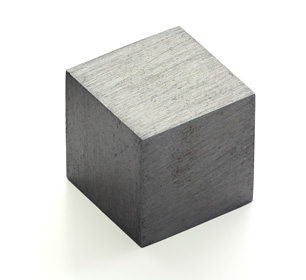Cadmium
| EPA Maximum Contaminant Level (MCL) |
0.005 mg/L |

Cadmium is a soft, bluish-white metal usually associated with zinc. It's used in the manufacture of batteries, electronics and nuclear reactors. It's plated onto steel to prevent corrosion, and two of its compounds (cadmium sulfide and cadmium selenide) are used to produce pigment for plastics.
Cadmium can enter the environment through a variety of industrial and agricultural operations, and as a by-product of fossil fuel use. General use has declined, and now about 80% of cadmium in the environment comes from nickel-cadmium batteries. Cadmium often enters water as the result of deterioration of galvanized plumbing, fertilizer contamination, and industrial waste in general.
Health Effects of Cadmium
Long term exposure to cadmium may have harmful effects on the kidney, according to the EPA:
Some people who drink water containing cadmium in excess of the maximum contaminant level (0.005 milligrams per Liter) over many years could experience kidney damage.
Water Treatment for Cadmium
Cadmium is easily removed from water by reverse osmosis (95 to 98%), by cation exchange (water softener), and by dialysis.
Sources: Enting Engineering Handbook, WHO, Wikipedia, EPA, Photo: WikiMedia, author: Alchemist-hp
Site Index
Filtration Systems
- Aeration for Iron & Sulfide
- Backwashing Filters
(whole house & well units)
- Chlorine & Chemical Injectors
- Countertop Water Filters
- Garden Hose Filters
- Reverse Osmosis, Residential
- Reverse Osmosis, Commercial
- Shower Filters
- Specialty Filters
- Ultraviolet Systems
- Undersink Filters
- Water Softeners
- Whole House Filters
Cartridges
Parts
- Replacement Parts
- Faucets
- Filter Media
- Fittings
- Housings
- O-rings
- Pumps
- Pura UV
- R.O. Parts
- R.O. Tanks
- R.O. Booster Pump
- VIQUA UV